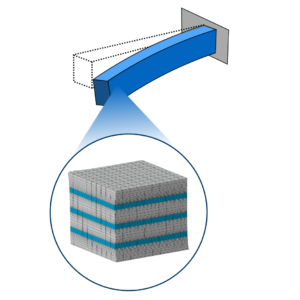
Project C – Macroscale Continuum Modeling and FE Simulation of Electromechanical Coupling in Perovskite-Based Materials

Description / Outline
Ferroelectric materials are of utmost interest for a variety of technological applications due to their electromechanical coupling properties. At the macroscopic length scale, ferroelectrics models are based on continuum approaches using the finite element method. Linear continuum models that ignore the nonlinear phenomena in ferroelectrics are, however, insufficient to accurately predict ferroelectric behavior. For that reason, nonlinear continuum models are preferred to more efficiently capture the polarization switching mechanisms. To date, most ferroelectric models have been based on ferroelectric domain switching, which occurs through a nucleation and growth process. Novel lead-free ferroelectrics, however, have displayed different straining mechanisms, necessitating new modeling and simulation methods. The lead-free ferroelectric materials, (Ba,Ca)(Zr,Ti)O3 (BCZT) and (K,Na)NbO3 (KNN), are promising candidates to be used in energy harvesting devices. They show excellent, tunable small signal electromechanical properties, which are mainly due to domain wall motion in both systems.
The aim of this project is the macroscale modeling of the electromechanical coupling in lead-free perovskite ferroelectrics using continuum mechanics. A nonlinear macroscopic material model will be developed and specified for the model systems BCZT and KNN. Its implementation into a finite element framework enables the simulation and optimization of electromechanical energy harvesting devices, which will be compared directly to experimental data.